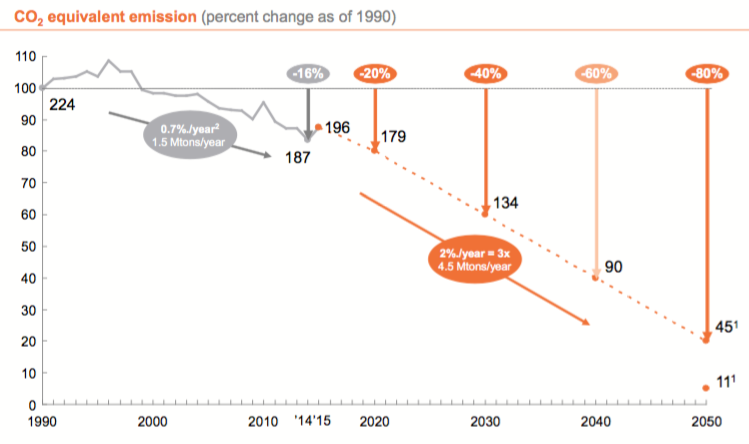Accelerating the energy transition, cost or opportunity? A thought starter for the Netherlands
Today it is the “klimaat top 2016” (National Climate conference 2016) in the VanNelle Fabriek Rotterdam. To achieve the paris goals, action is needed. That is exactly where today stands for. McKinsey&company wrote an advisory report for the Netherlands, concerning the implementation of renewable energy. In 2050 the Netherlands agreed to increase their use of renewable energy to 90-95%. Therefore, the Netherlands are investing highly in the renewable energy sector. Nevertheless, if we want to achieve the goals, we need 80% more reduction in the years coming. The problems, challenges and possible solutions are established in the report.
Some alarming hard facts coming from the report:
- Currently, only 6 percent of the country’s energy comes from renewable sources.
- GHG emissions from the Netherlands were 223.8 million metric tons (Mtons) of carbon dioxide equivalent (CO2e) in 1990. After peaking in 1996, emissions dropped by an average of 0.7 percentage points per year until 2014 (1.5 Mtons/year), when they were 187 million metric tons CO2e, equaling a total emission reduction of 16 percent over 24 years. An
80 percent emission reduction by 2050, in line with EU-wide targets, would bring the Netherlands’ greenhouse emissions down to 44 million metric tons.

- Consider that each person in the Netherlands accounts for approx. 10 metric tons of GHG emissions per year. Reaching
a 2050 emissions goal of 44 million metric tons, with no change in population, would require the Netherlands to produce per capita emissions of just 2.6 metric tons. That is a developing-country level of emissions intensity, comparable to Panama or Egypt. Similarly, comparing carbon intensity of the economy, indicates that the Netherlands would need to end up at carbon emissions per unit GDP similar to those currently realized in Zambia.
Read more about this topic here.
